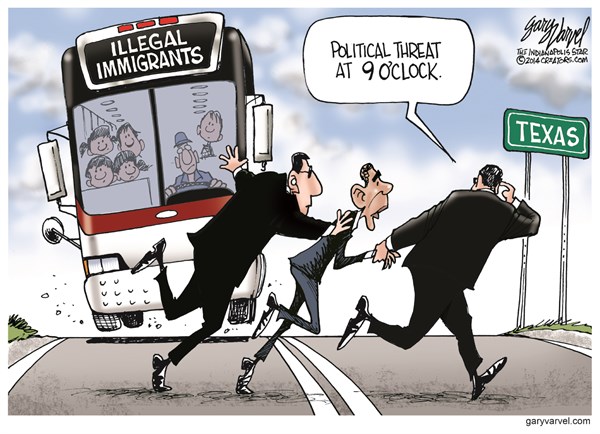US Has Not Been Trying to Simply ‘Contain’ China
In English, the original meaning of the word “containment” is “to prevent something from expanding.” In the field of international relations, the word “containment” refers to the Cold War strategic policies of the United States, which were enacted to control the expansion of the USSR’s socialist ideology. Regardless of the way you look at it, today’s U.S.-China relations and the U.S-Soviet relations of the Cold War period cannot be considered in the same light. We can’t use the specifics of the Cold War containment strategy used by the U.S. against the USSR to generalize the United States’ present strategy toward China.
Of course, it goes without saying that in both the U.S. and in China, people rarely apply specialized terminology under strict guidelines. In English, for example, the word “contain” can also mean, “to come up with a way to restrict an unfriendly country from expanding its influence.” If this is what is meant by containment, then does the U.S. really have an all-encompassing strategy to contain a rapidly rising China? This author thinks we cannot rule out the possibility that the U.S., or at the very least some important people within it, are trying to come up with such a strategy. However, even if they are mulling over such plans, they have to do so without stirring up concerns. Over the past 30 years or so, China has achieved a position of international prominence. In turn, this has undoubtedly led to the U.S. trying to constrain China’s overall rise. If the U.S. attempted to contain China in the same way it did during the Cold War, exactly how many countries could it expect would go along with its plan? U.S. strategists are all very clear — the times have changed. And besides, China doesn’t have the same foreign strategy as that of the former Soviet Union. If the U.S. doesn’t know what strategy to use, then it can hardly put a strategy into action.
When many people talk about the United States’ China strategy being one of containment, what they are really saying is that the U.S. is either using passive tactics — is resisting — or that the U.S. has already made its strategies mainstream on a competitive level. In truth, the passive strategies of the U.S. have always been there and, in recent years, have been escalating rapidly. Insofar as whether or not passive strategies are a major component of the United States’ China strategy, those in the academic world are divided. But even if we use the word “containment” to summarize these passive strategies of the United States, we still are grossly oversimplifying things. At the very least, these passive strategies against China embody the following: firstly, regulation — the use of international institutions and policies to restrict China’s activities. Secondly, “pushing back” — the use of acts of resistance to warn China, display the determination of the U.S. and appease its Asia-Pacific allies. Thirdly, checks and balances — an increase of the political clout of the U.S. in the Asia-Pacific region, along with its economic power, military presence and the expansion of its allied “pals” in the region to counteract China’s increasing influence. Fourthly, transformation — to infiltrate the Chinese consciousness. Finally, there is competition — to control and restrict domains of China’s manufacturing, science and technological capacities.
Since the end of last year, America has been taking aim at the issues within the East and South China seas. It has even adopted “pushing back” tactics. By its nature, pushing back is even more aggressive than mere containment. Can we really use the word “containment” to summarize these complex situations? To take the various strategies outlined above and call them containment will, in the very least, create the following problems. Firstly, strategically it will lead us astray and into the dark, making us neglect the potential areas for cooperation that exist within the United States’ China strategy. Secondly, it will cause us to oversimplify our response tactics. For example, pushing back possibly requires a tit-for-tat response; [a tactic of] restriction will possibly need to be dealt with from within the frameworks of policy and administration; as for transformation, this calls for us to strengthen our ideological foundations and legal systems. If we do all these things in response to containment, then all that remains is the option for a Cold War. Thirdly, it will lead us to miscalculate the challenges inherent in the United States’ China strategy. What the U.S. is using against China isn’t an impenetrable defense of containment, nor is it sticking China in some sort of jumpsuit of international policies and administration. It’s not a wall, it’s a net, and in it are many holes through which we can connect with the outside world. At the same time, it also has many “soft” restrictions. This kind of containment is precisely the most difficult aspect about the U.S. China strategy to formulate a response to.
If we try to understand our partner’s moves as being pragmatic tricks, and then use pragmatic tricks to respond to them, then China will hardly become successful in the game of international politics. Since the start of this year, both China and the U.S. have let fly poorly worded statements and faced off over contentious issues. Yet at the same time, they’ve also kept up a spirit of cooperation. This week, the U.S. and China will hold their sixth round of strategic and economic talks, as well as the fifth round of high-level consultations over cultural exchanges. Different situations call for different responses — this is the proper way for a great nation to make its moves.
The author is the Director of the U.S. Affairs Institute at the China Contemporary International Relations Research Center.

